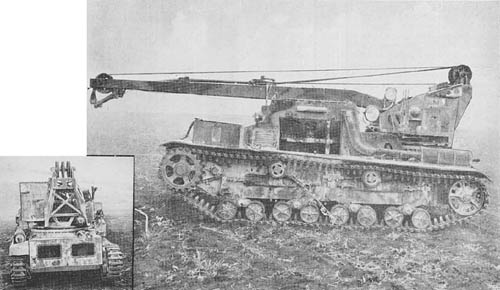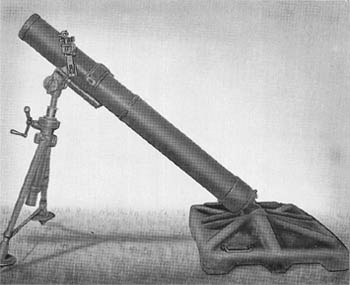
This mortar, of conventional design, is a smooth bore, muzzle-loading weapon referred to by the Japanese as a medium mortar. Although its tactical use is not fully defined, it is known to have been used in fixed concrete emplacements as a part of the island defense system.
The Model 97 is very heavy and sturdily constructed, weighing 770 pounds complete with sight. The breech cap and stud, with assembled firing mechanism, are screwed on in the normal manner. The firing pin may be adjusted to three different positions by means of a cam lock. When the lock is in the rear center position the firing pin is in a safe position; when the lock is turned to the right, the pin is “Floating,” or, in other words, may be actuated by a sharp blow on the end of the cam shaft. When the firing pin is locked forward, the operation is the same as that of a mortar with a fixed firing pin.
The bipod is of normal construction with but one exception. The elevating screw is actually two concentric screws, comparing very favorably with a single screw in stability and overall length. The traversing screw, buffer mechanism, and collar assembly are of the same design as other Model 97 Japanese mortars. The bipod and cradle may be separated for handling.
The base plate is a heavy ribbed stamping of 0.25 inch metal built up by reinforcing ribs welded to the original stamping. It has the usual ball and socket locking arrangement. The sight is a panoramic elbow telescope of three power and thirteen degree field.
SPECIFICATIONS
| Caliber | 150 mm (5.906 ins.) | |
| Weight (complete) | 770 lbs. | |
| Weight of tube | 257 lbs. | |
| Weight of bipod & traversing assembly (total) | 174.5 lbs. | |
| Weight of sight & extension | 1.5 lb. | |
| Weight of baseplate | 337 lbs. | |
| Length of tube | 75.37 ins. | |
| Length of tube (internal) | 66 ins. | |
| Length of baseplate | 47.75 ins. | |
| Width of baseplate | 35.5 ins. |
Japanese: p. 127 (March 1, 1945)
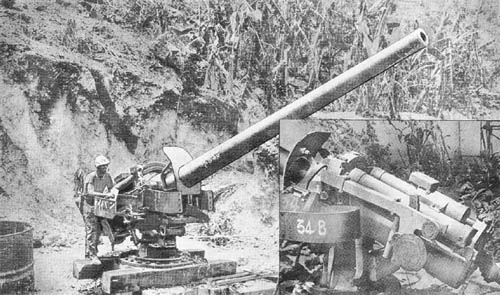
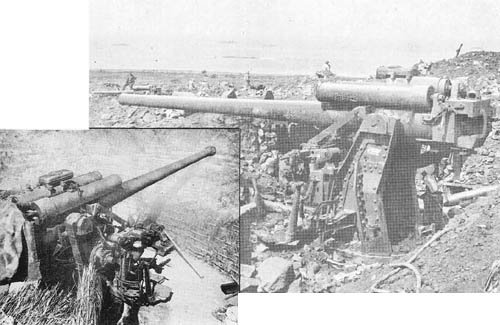
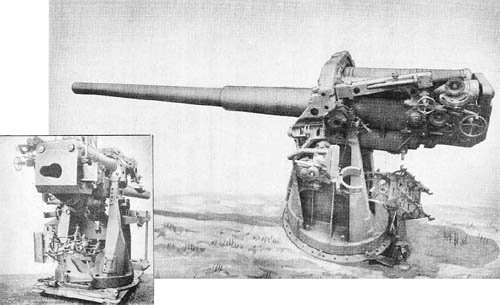
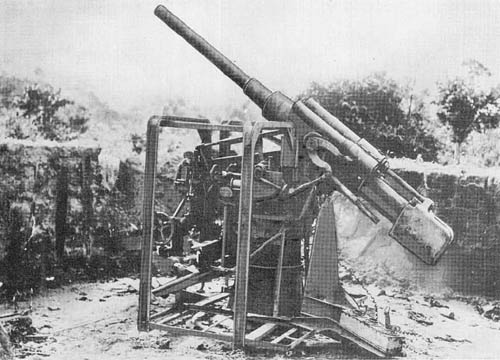
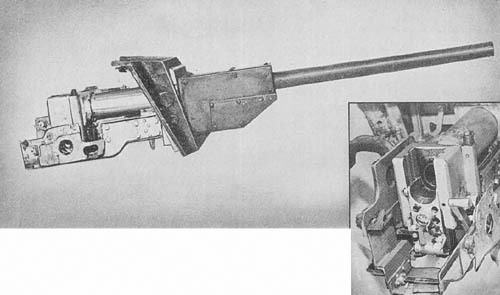
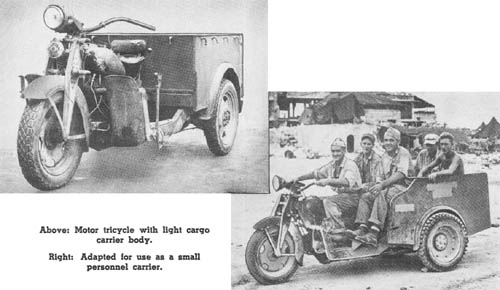
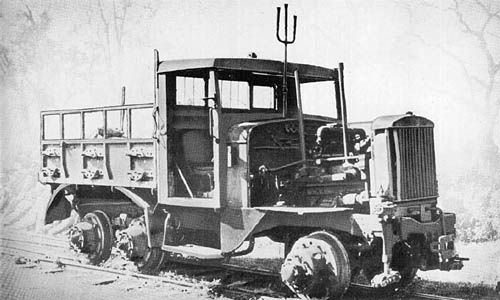
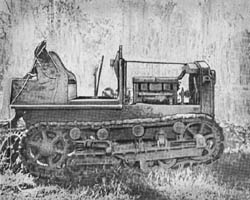 This is a slow speed tractor equipped with a towing hook and is believed to be the standard Japanese artillery prime mover. There are two bogies on each side, each bogie having three bogie wheels, two bearing on the outside and one on the middle of the tractor. Clutch and brake steering are provided. The power plant is a 4-cylinder, water-cooled, gasoline engine. The cylinder block is of two separate sections. Each section is joined into one piece at the top, but the base of each cylinder is separate from all other cylinders.
This is a slow speed tractor equipped with a towing hook and is believed to be the standard Japanese artillery prime mover. There are two bogies on each side, each bogie having three bogie wheels, two bearing on the outside and one on the middle of the tractor. Clutch and brake steering are provided. The power plant is a 4-cylinder, water-cooled, gasoline engine. The cylinder block is of two separate sections. Each section is joined into one piece at the top, but the base of each cylinder is separate from all other cylinders.